Exploring the Pro Tools Workflow Enhancements
Chairman Graeme Huon welcomed attendees and introduced our speaker Drew Parson, Audio Applications Specialist at AVID Australian & New Zealand. Graeme also introduced Leigh Spachic, General Manager of Innovative Music Australia, and thanked him for facilitating this presentation.
Drew reviewed a variety of new and sometimes overlooked Pro Tools features developed over the last four years to date with a focus on TV, post-production and music production workflows. In line with its policy of continuous Pro Tools updates, AVID developed many of these enhancements in direct response to customer feedback and evolving technical standards, practices and partner ecosystems.
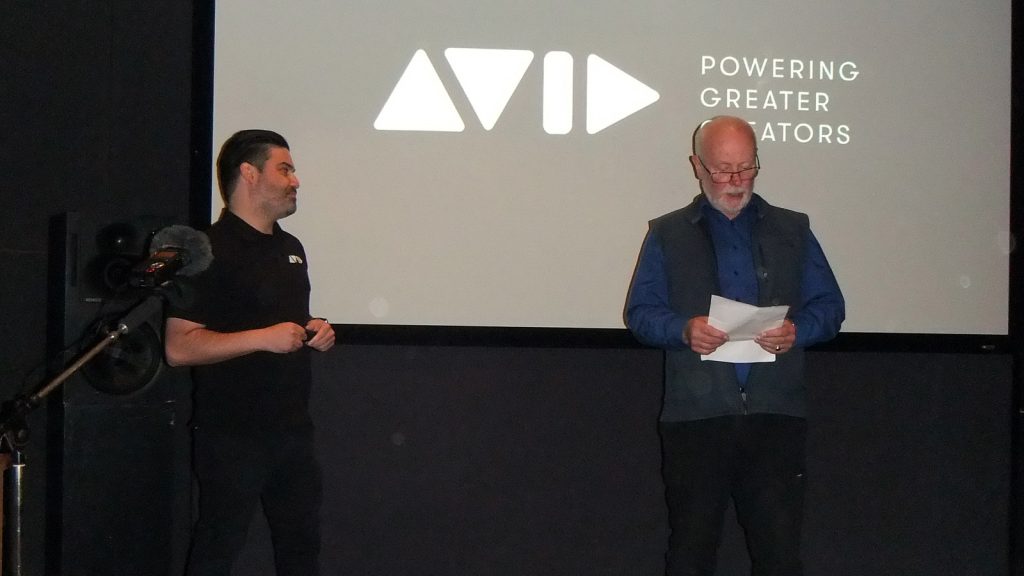
Drew began his presentation with Track Freeze, a feature AVID developed over the past few years in response to the growing ‘mixing in the box’ trend and increasing use of virtual instruments and effects. Drew explained that Track Freeze is a non-destructive render of all tracks.
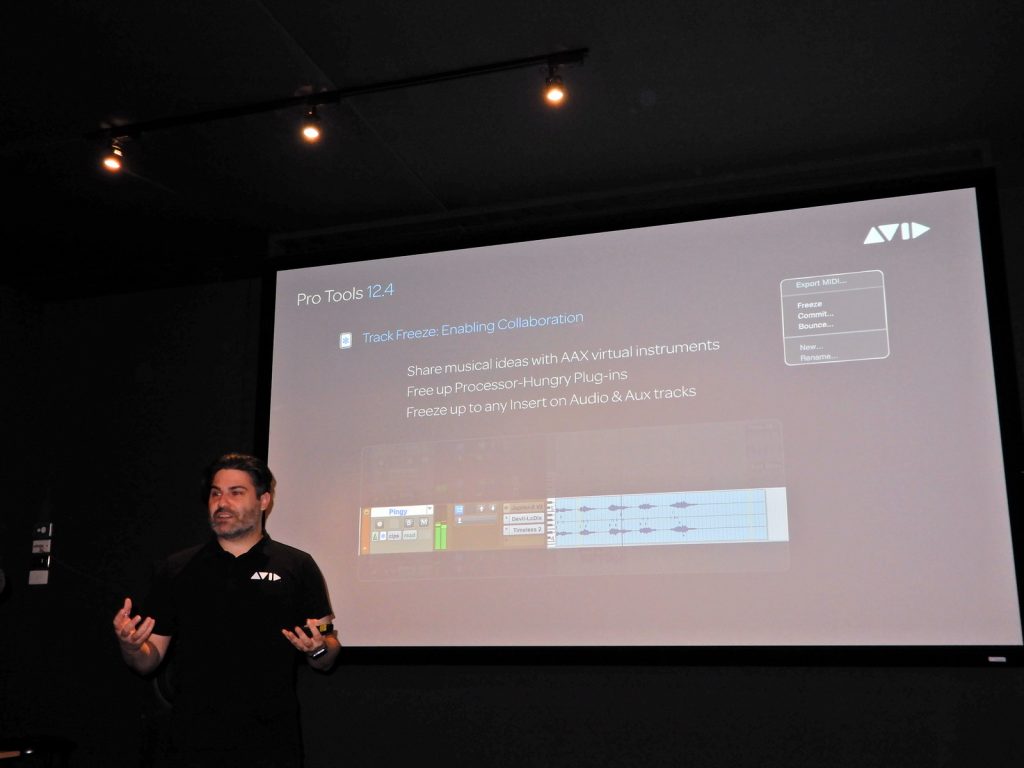
Like the Track Freeze feature, Drew went on to show how Track Commit can be used to commit a virtual instrument to an audio file, as opposed to freezing and unfreezing a single track. It is possible to commit all virtual instruments to audio rather than leaving them in MIDI to simplify archiving: ‘Think about remixing this session ten years from now’. Drew always commits his virtual instruments to audio so they can be opened in future. MIDI tracks can be dragged to commit to audio (bouncing).
Drew commented that Track Freeze and Track Commit were developed primarily for the next feature, AVID Cloud Collaboration using Microsoft Azure. This feature allows Pro Tools users to easily share sessions and tracks with other users, avoiding issues with file management and version control associated with previous file transfer methods. Using AVID Cloud Collaboration, a Pro Tools ‘owner’ can invite other Pro Tools users to join a single master session. A range of privileges can be assigned to participants. Whoever is working on the track can ‘lock out’ others from making changes to the “master cloud project” avoiding contention issues. Other users can request the ‘owner’ to grant change privileges. Changes (edits, plug-ins, etc) are notified by down arrow indicators. A chat tool is integrated in the cloud collaboration feature.
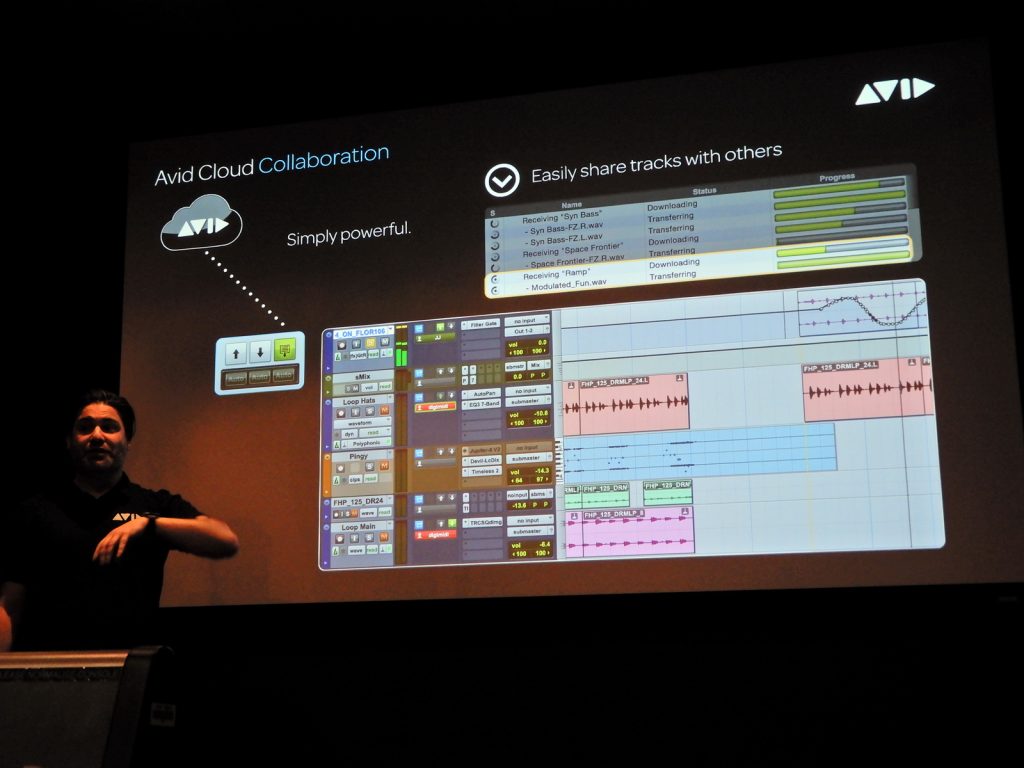
More shortcuts have been added to show individual tracks of multiple takes, simplifying and speeding up the creation of a compilation of choice takes. This is helpful for music production; for example, finding ‘the perfect’ drum sound by scrolling through the selection.
Drew then went on to show how to copy tracks to a Target Playlist to make the ‘ultimate take’, which can be further edited if desired (fades, trims, etc).
MIDI Improvements include a Retrospective MIDI Record feature in which Pro Tools buffers what you have played and makes a recording after you have played it, printing it onto the timeline. Various MIDI editor navigation tools have been added using the left/right and up/down arrows, shift key (moves a note by an octave) and control key (moves a note in the key of the Pro Tools session). These keys remove the need to use a mouse.
The next part of Drew’s presentation described Track Presets, which he said is one of his favourite features released last year. Track Presets are simple to create and can save and recall a track’s signal processing for future. Both audio and MIDI can be added to a Track Preset and tags can be added to aid searching.
Next, Drew described Clip Effects developed in response to post-production requests. This is a real-time, non-destructive processing for each clip (e.g. EQ, dynamics, filters for dialogue). It is pre-channel EQ or dynamics and has independent settings for each clip with no added latency. Drew compared this feature with the previous Clip Gain feature in Pro Tools 10.
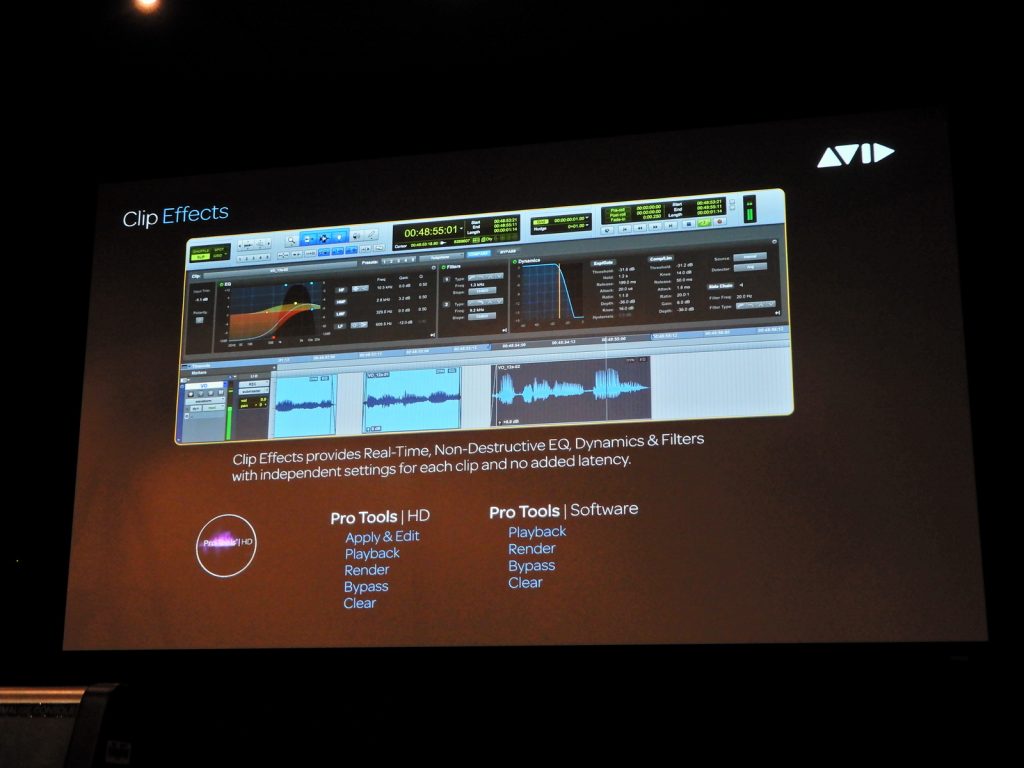
With the growing popularity of Virtual Reality (VR) driving new audio formats, Drew described how AVID decided to add larger channel formats in Pro Tools for Ambisonics Support with 4, 9 or 16 channel tracks, built in. For example, 4-channel microphones can be recorded straight into Pro Tools now. The Facebook plug-in is installed when Pro Tools is installed on your machine. Drew mentioned that many third-party plug-ins are now available for Ambisonics.

Next, Drew described how AVID started working with Dolby Labs about two years ago to develop Dolby Atmos Support. The Pro Tools bus has increased the previous 7.1 bus to a 7.1.2 bus, and a 3D panner (i.e. 7.1 plus a height panel). Drew showed a 7.1.2 bed and up to 118 channels (‘objects’) then played a 7.1.2 demo session provided by Dolby Labs. The production suite can be used for premixing if not using Dolby hardware.
Drew explained there are typically 3 ways of working with Dolby Atmos:
- Theatrical RMU, for large dub stages, Dolby is usually involved;
- Home theatre RMU, box supplied by a reseller;
- Offline version called Dolby Production Suite for premixing in a small room.
Pro Tools 2019.10 (to be released in a few days’ time) meets the workflow requirements of the Netflix Post-Production Technology Alliance. Netflix now requires all content to be delivered with a Dolby Atmos file (mix, 7.1, 5.1 and stereo).
Drew introduced a new driver called Dolby Audio Bridge, set as an input device. The output device is set to whatever device is currently being used. Pro Tools can generate MIDI timecode to sync Dolby software. Up to 130 channels of audio (including metadata for panning) can be sent from Pro Tools to the Dolby software using the Dolby Audio Bridge making it easier to mix in Dolby Atmos.

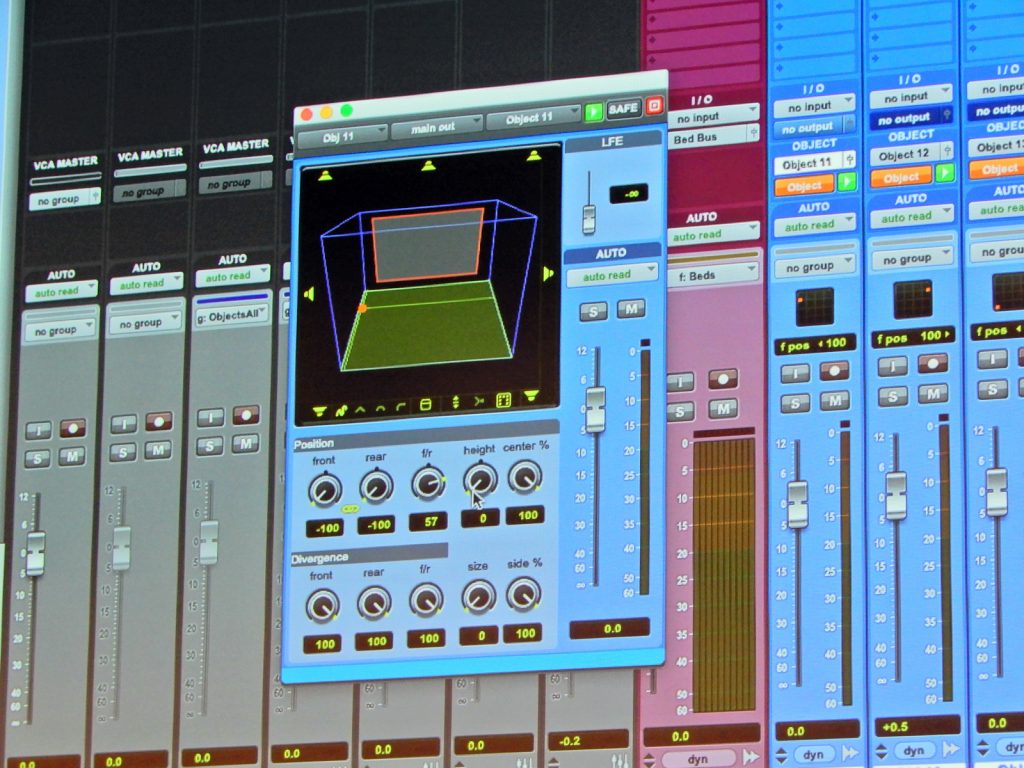
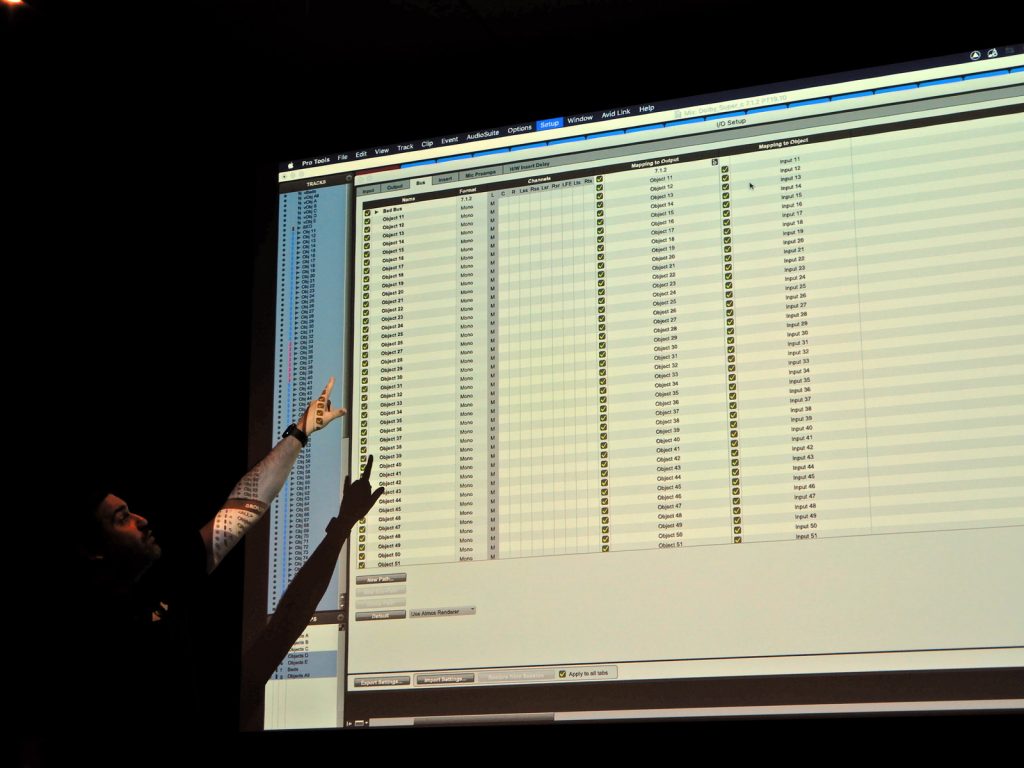
Drew went on to describe the New Video Engine that supports up to 4K UHD and up to 120 frames per second. The H.264 codec supports decoding with improved performance (frame rates, raster sizes, etc).
At Netflix’s request AVID developed Bounce Sources that can be used to bounce multiple sources at the one time. This is beneficial for workflows involving multiple stems (e.g. music, dialogue & effects). Delivery file format options include the ability to export renders as individual files or as one single file in which everything is packaged into the one file. As an example, a single file package simplifies workflow between different editors.
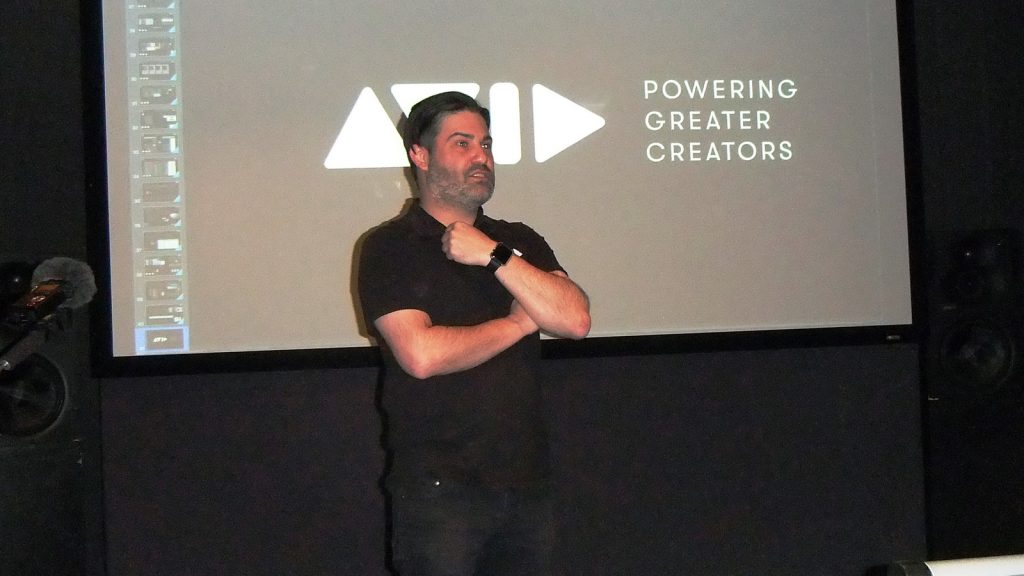
At the end of Drew’s presentation Graeme Huon opened the floor to a very lively Q&A session. Many attendees showed a keen interest in the subject. The questions covered a wide range of topics including: platform specifications for the current Pro Tools, Internet connectivity requirements, Apple Macintosh OS evolution, location of AVID’s global software development centres, Dolby Atmos versus Auro 3D, and pros and cons of further integration of audio and video editing software in the future.
Graeme Huon thanked Drew Parsons for a most interesting presentation and closed the session at 8:50 pm.
An audio recording can be heard or downloaded here
We thank Graham Haynes, and his trusty Tascam for the audio recording.
We especially thank the SAE Institute for the use of their excellent facilities for our meetings.
[David Hudson prepared this meeting report on behalf of Peter Smerdon, who thanks David for this excellent report].
